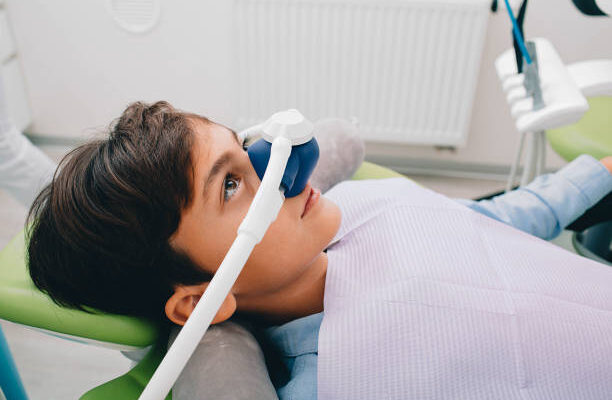Dental anxiety is a common issue that affects millions of people worldwide, often leading to avoidance of necessary dental care. However, thanks to advancements in dental sedation techniques, patients can now undergo dental procedures with minimal stress and discomfort. Dental sedation offers a range of benefits, providing relief for anxious patients and facilitating smoother dental treatments. In this article, we will delve into the concept of dental sedation, its types, benefits, and important considerations.
What is Dental Sedation?
Dental sedation involves the use of medications to help patients relax during dental procedures. It is particularly beneficial for individuals with dental phobia, anxiety, or those undergoing lengthy or invasive treatments. Dental sedation can be administered in various forms, catering to the specific needs and preferences of each patient.
Types of Dental Sedation:
- Nitrous Oxide (Laughing Gas): Nitrous oxide, commonly known as laughing gas, is a safe and effective sedative administered through a mask placed over the patient’s nose. It induces a state of relaxation and euphoria, allowing the patient to remain conscious throughout the procedure. One of the key advantages of nitrous oxide is its rapid onset and quick recovery time, making it suitable for short dental appointments.
- Oral Sedation: Oral sedatives, such as benzodiazepines, are prescribed medications taken by mouth before the dental procedure. These medications induce a calming effect, reducing anxiety and promoting relaxation. Oral sedation can range from mild to moderate, depending on the dosage administered. Patients may feel drowsy but remain conscious during the treatment.
- Intravenous (IV) Sedation: IV sedation involves the administration of sedative medications directly into the bloodstream through an intravenous line. This form of sedation allows for precise control over the level of sedation, ensuring optimal comfort and relaxation for the patient. IV sedation is commonly used for complex or lengthy procedures, providing deep relaxation while keeping the patient responsive to verbal cues.
- General Anesthesia: General anesthesia is the deepest form of sedation, rendering the patient completely unconscious throughout the procedure. It is typically reserved for extensive oral surgeries or patients with severe dental anxiety or special needs. General anesthesia requires careful monitoring by an anesthesiologist to ensure the patient’s safety and well-being.
Benefits of Dental Sedation:
- Reduced Anxiety: Dental sedation helps alleviate fear and anxiety associated with dental visits, allowing patients to undergo necessary treatments without distress.
- Improved Comfort: Sedation promotes relaxation and reduces discomfort during dental procedures, making the experience more pleasant for patients.
- Increased Cooperation: Sedation can enhance patient cooperation by minimizing movements and involuntary reflexes, facilitating smoother and more efficient dental treatments.
- Time Efficiency: Sedation allows dentists to perform complex or lengthy procedures more effectively, as patients are more relaxed and less likely to experience discomfort or anxiety-induced interruptions.
Important Considerations:
- Medical History: Dentists carefully evaluate patients’ medical history and current health status before recommending sedation, ensuring its safety and suitability for each individual.
- Monitoring: Proper monitoring of vital signs is essential during sedation to ensure patient safety. Dentists and trained staff continuously monitor the patient’s breathing, heart rate, and blood pressure throughout the procedure.
- Post-Sedation Care: After the procedure, patients may experience lingering effects of sedation, such as drowsiness or impaired coordination. It is important to arrange for a responsible adult to accompany the patient home and provide necessary assistance during the recovery period.
- Informed Consent: Before undergoing dental sedation, patients should receive detailed information about the procedure, its risks and benefits, and any alternative options available. Informed consent ensures that patients can make educated decisions about their dental care.
In conclusion, dental sedation is a valuable tool that enables patients to overcome fear and anxiety associated with dental treatments, ensuring access to essential oral healthcare services. By offering various sedation options tailored to individual needs, dentists can provide a comfortable and stress-free experience for even the most apprehensive patients. However, it is crucial for both patients and dental practitioners like – Dr. JohnHansford to approach sedation with caution, prioritizing safety and informed decision-making at all times.
















Comments